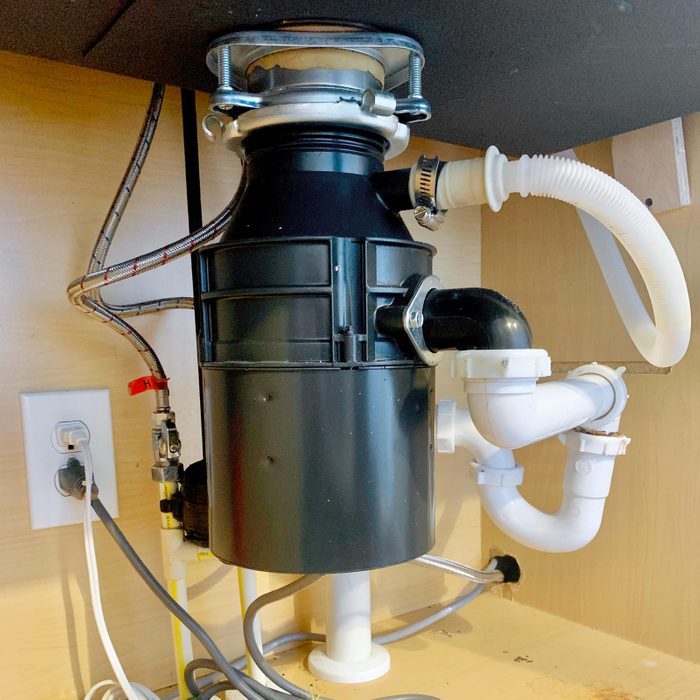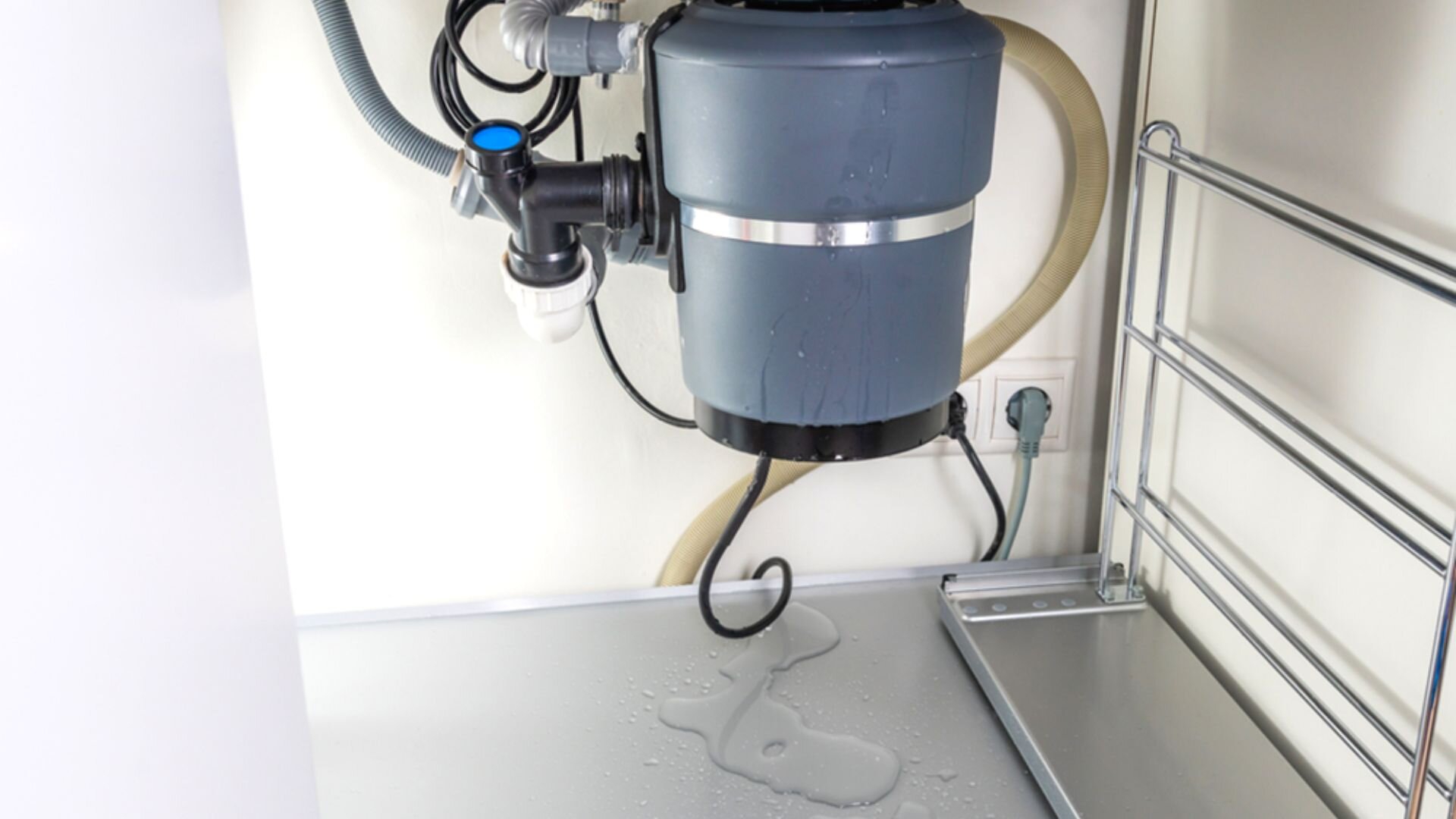Straightforward Steps to Stop a Leak in Your Garbage Disposal
Straightforward Steps to Stop a Leak in Your Garbage Disposal
Blog Article
We've encountered this great article involving Garbage Disposal Leaking From Bottom below on the internet and concluded it made sense to share it with you over here.

Waste disposal unit are necessary cooking area home appliances that help in disposing of food waste efficiently. Nevertheless, a leaking garbage disposal can be a frustrating and unpleasant issue to handle. Fortunately, several leakages can be repaired conveniently with a couple of basic steps. In this write-up, we will review exactly how to fix a dripping garbage disposal properly.
Introduction
Waste disposal unit are installed under kitchen area sinks and are designed to shred food waste into smaller sized items, allowing it to go through the plumbing system quickly. While these tools are generally reputable, leakages can take place over time due to deterioration, loosened connections, or damage to the unit.
Common Reasons For Leaks in Trash Disposals
Worn Seals and Gaskets
Seals and gaskets play a vital function in stopping water from dripping out of the waste disposal unit. Over time, these parts can wear away, bring about leakages around the disposal system.
Loose Connections
The links between the waste disposal unit and the plumbing system can become loosened gradually, triggering water to leakage out during procedure.
Cracks or Holes in the Disposal Unit
Physical damage to the waste disposal unit, such as cracks or openings in the real estate, can likewise cause leakages.
Identifying the Source of the Leak
Prior to attempting to take care of a dripping waste disposal unit, it is vital to identify the resource of the leak. This can generally be done with aesthetic evaluation or by performing basic examinations.
Visual Inspection
Examine the waste disposal unit system meticulously for any type of signs of water leakage. Pay close attention to locations around seals, gaskets, and connection factors.
Checking for Leakages
One method to check for leaks is by running water with the disposal unit and checking for any noticeable signs of leakage.
Devices and Materials Needed for Taking Care Of a Leaking Waste Disposal Unit
Before beginning the fixing process, gather the essential devices and materials, including a screwdriver, flexible wrench, plumber's putty, substitute seals or gaskets, and epoxy or patching product for repairing cracks or openings.
Step-by-Step Overview to Taking Care Of a Leaking Waste Disposal Unit
Switch off the Power
Prior to attempting any kind of repair work, make sure that the power to the waste disposal unit unit is turned off to avoid the risk of electric shock.
Locate the Leak
Recognize the precise area of the leakage and identify the reason.
Tighten up Links
Use a wrench to tighten any type of loosened links in between the disposal device and the pipes system.
Change Seals or Gaskets
If the leak is due to worn seals or gaskets, get rid of the old parts and change them with brand-new ones.
Patching Splits or Openings
For fractures or openings in the disposal system, use epoxy or an appropriate patching material to seal the damaged location.
Examining the Waste Disposal Unit After Repair Service
When the repair work is complete, test the garbage disposal by running water via it to guarantee that the leak has actually been dealt with.
Preventive Upkeep Tips to Prevent Future Leakages
To stop future leaks, it is important to perform regular maintenance on your garbage disposal. This consists of maintaining it tidy, avoiding putting non-food items or tough items down the disposal, and periodically looking for leakages or other issues.
Conclusion
In conclusion, taking care of a dripping garbage disposal is a reasonably uncomplicated process that can be finished with fundamental devices and products. By following the actions laid out in this write-up and practicing preventive upkeep, you can maintain your garbage disposal in good working problem and prevent expensive repair work in the future.
HERE’S HOW TO FIX YOUR GARBAGE DISPOSAL
WHAT TO DO IF SOMETHING IS STUCK IN YOUR GARBAGE DISPOSAL
If the impeller won’t turn, there’s probably something stuck in the disposal. It could be a steak bone or peach pit, although plumbers report pulling all sorts of inappropriate objects out of disposals, such as bottle caps or aluminum foil. Make sure power to the disposal is off, and look inside to see if you can see the source of the jam.
Never stick your fingers in a disposal. Pull out anything you see with tongs or pliers.
If the disposal still won’t work, it may be time to call a plumber or consider buying a new disposal. GEM Plumbing & Heating is here for all of your garbage disposal needs.
WHAT TO DO IF YOUR GARBAGE DISPOSAL DRAIN IS CLOGGED
Take everything out from underneath your sink and put a bucket or other container under your disposal to catch any water that drains out. Disconnect your disposal from the power supply. If it’s plugged into a wall outlet, unplug it. If it’s hardwired into an electrical box, go to the electrical panel and turn off the breaker for the disposal. Pour ¼ cup of baking soda into the drain, followed by ½ cup of white vinegar. Give the solution a few minutes to fizz and do its work. Look into the disposal with a flashlight to see if you can see an object that might be causing the clog. If you see it, remove it using tongs or pliers. MORE TIPS ON DEALING WITH A CLOGGED GARBAGE DISPOSAL
Never use drain cleaner in a garbage disposal. It can damage the plastic parts inside the disposal. You can also be splashed with the caustic liquid while working to clear the clog. Beware! Never stick your fingers into a garbage disposal. Trust us — not a good idea. In many instances, your dishwasher drains through your garbage disposal. This allows the disposal to grind any large food particles that may be drained out of your dishwasher. There are some jurisdictions, however, where the plumbing code prohibits such a connection. WHAT TO DO WHEN YOUR DISHWASHER DRAINS THROUGH THE DISPOSAL
Run some water in the sink so your plunger has at least a ½-inch of water to create a seal and plunge vigorously up and down several times. You may need to repeat this several times. Run hot water down the drain to clear any residue that remains.

I stumbled upon that blog posting about Why Is My Garbage Disposal Leaking From the Bottom? when doing a search on the web. Make sure you take a moment to promote this entry if you enjoyed reading it. Thank you for your time spent reading it.
Show Details Report this page